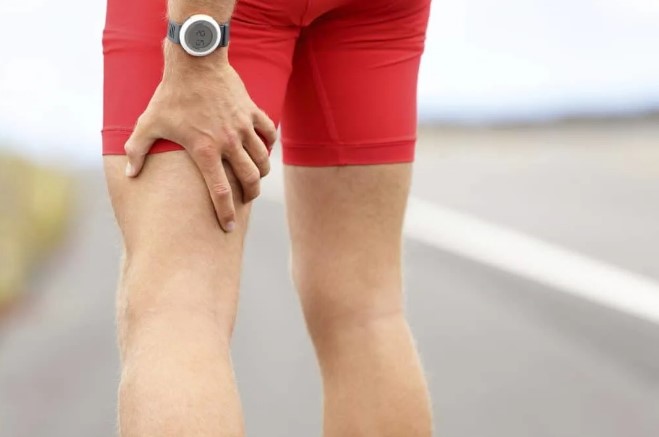There has always been an association between sciatica and running. This is because sciatica remains one of the commonest discomforts that runners experience. The pressure and painful irritation on the sciatic nerve can intensify during the process of running. But can running cause sciatica?
Running stretches the sciatic nerve that goes through the muscles of the feet, legs, and back but doesn’t cause sciatica. The compression of the sciatic nerve will increase through running, which will aggravate a sciatica condition the more. Thus, running may cause more discomfort for a sciatica patient.
This article gives more explanation on if running causes sciatica. Also, you will learn how to treat sciatica from running and what you should not do with sciatica. Keep reading.
Key Takeaways:
- Running doesn’t cause sciatica, but it might increase the pains by compressing the nerves.
- Some causes of sciatica include Herniated Disc, Spinal Stenosis, Piriformis Syndrome, and Bone Spur of the Spine.
- You can run with sciatica but on softer surfaces, engaging in shorter running steps, applying heat therapy, using good running shoes, etc.
Can Running Cause Sciatica?
Running applies more compression to the muscles of the legs, feet, and the sciatic nerve that interweave with these muscles. However, running doesn’t cause sciatica though it could increase its irritation.
Sciatica is a form of painful condition one feels when there’s an irritation or compression of the sciatic nerve. This nerve is the largest in the human, measuring up to 2cm in diameter. The sciatic nerve runs from the spinal joints through the back to the legs and feet. Also, it’s interwoven with muscles and tissues throughout its path.

Running is an exercise that exerts pressure on the muscles of the feet, legs, and even the back. These are majorly the path where the sciatic nerve passes. Hence, many people are confused and ask, can running cause sciatica? Let’s look at some of the conditions that could cause sciatica.
What Are The Causes Of Sciatica?
The following are the some of the causes of sciatica:
- Piriformis Syndrome – This condition is most common among runners and occurs when there’s a spasm in the piriformis muscles. It’s the piriformis that provides a runner balance as his foot hits the ground and maintains the hip rotation. Since the sciatic nerve passes through the muscles, the tightening of the piriformis muscles will irritate the nerve. So, with more spasms on the piriformis muscles, the irritation of the sciatic nerve will intensify.
- Herniated Disc – This condition is the gradual wear and tear of the spinal disc due to old age. With the advancement in age, the discs are less flexible. Hence, they will constantly rub against each other at the slightest twist or strain, causing sciatica.
- Bone Spur of the Spine – This occurs in locations of bone edges or joints where bone meets. Osteoarthritis is one of the major reasons of damage around bone joints. Bone spurs along the spinal cord could compress the sciatic nerve and produce some excruciating pain for the patient.
- Narrowing of the Spine (Spinal Stenosis) – The narrowing of the spaces within the spine creates more compression on the sciatic nerve along the spine. Also, osteoarthritis is the main cause of spinal stenosis. This condition is more common among individuals up to and above 50 years.
What Are The Symptoms Of Sciatica?
Sciatica comes with a feeling of pain through a side of the body. The feeling could differ based on the location where there’s compression or irritation of the sciatic nerve.

Below are some of the sciatica symptoms.
- Radiating pain through the lower spinal region to the mid-buttocks.
- Pain from the back to the back of the leg.
- Sharp pain that passes through the thigh and calf.
- Muscular weakness, numbness, or tingling effects.
- Sharp electrical jolts around the buttocks and back of the leg.
Should I Stop Running If I Have Sciatica?
Running could add more to sciatica pain by intensifying the irritation of the sciatic nerve. However, the location and level of sciatica pain will form the major determining factors in whether to stop running or not. Also, the recommendation of a doctor will serve as a guide for such a decision. But, in most cases, the person may not have to completely stop running due to sciatica.
5 Ways Of Running With Sciatica
The following guides will help you to continue running with sciatica.

1. Use Softer Surfaces
Running on hard surfaces like asphalt, sidewalks, and others will exert more pressure on the sciatic nerve as your foot hits the ground. This increases the sciatica pain and elongates the healing period of the irritated muscle. The condition will invariably worsen with a continuous repetition of running and bouncing on the hard ground.
However, the use of softer ground like grasses, local trails, and tracks will reduce the pressure on your muscles. Also, you should make some adjustments to your running process. You shouldn’t land on your heels, and your chest should be your lead with your head held up over the chest.
2. Take Shorter Running Steps
With sciatica, longer strides while running is a great disadvantage. They cause more extension on the sciatic nerve, thereby increasing the sciatica pain. But with shorter strides, you will reduce the bouncing pressure the feet impact on the ground. Also, shorter running steps will cut down the muscular pains in the lower back and the sciatic nerve.
3. Replace Your Running Shoes
Running with sciatica could be more frustrating when using the wrong footwear. You can create more comfort and relief by using running shoes for sciatica pain. Also, some people opt to even run barefoot with sciatica conditions. But the risk of such an action far outweighs its gain.
Moreover, while picking your running shoes, you should look at both the outward sole and the inner comfort. Hence, you should avoid using running shoes that are too tight, wide, or lack stability and comfort. With good and proper shoes, you should have a cushion effect for your feet and maximum support while running.
4. Engage in Yoga
Yoga is one of the best-known exercise processes that could enhance your body’s flexibility and strength of your muscles. It reduces the stress on the sciatic nerve. But you must engage in yoga while following your doctor’s recommendations. Several yoga instructors partner with medical practitioners to provide the right exercise for patients.
Remember not to overstretch your body. Your beginning stage should align with your body capacity. So, it’s best to kick off with basic poses through your yoga instructor’s guide. Also, you should be your yoga sessions low by taking 5 minutes periods 3 or 4 times weekly.
5. Apply Heat Therapy
The inclusion of heat therapy in the warm-up process for running is quite effective for managing sciatica. The warmth goes a long way in relaxing the muscles within the lower back region, legs, and feet. It loosens the tight muscles through which the sciatic nerve crosses. Also, the warmth can quicken the healing of the sciatica condition.
Using special heat wraps, hot water bottles, or steamed towels, you can perform heat therapy. The heat application should be between 10 – 20 minutes to ensure you have the best result. Also, depending on the level of your sciatica pain, you may attach adhesive heat wraps for continuous warmth even while running.
How Do You Treat Sciatica From Running?
The best way to treat sciatica from running is to maintain continuous pre- and post-running stretching routines. Though sciatica pain usually occurs on one side of the body, the stretching routines should inculcate both body sides. Also, it should focus on the gluteus, flexors of the hips, and hamstrings.

Generally, here are ways you could treat sciatica from running. You might receive a considerable result in handling the sciatica condition within one month.
- Engaging in supportive stretching that covers both your pre- and post-running The stretch must target critical parts through the sciatic nerve cross, including the hip flexors, hamstrings, and gluteus.
- Maintain regular running sessions that will curb falling into a period of inactivity. This keeps your body and muscles stronger and reduces sciatica pain.
- Include the use of warmth such as heating pads, steamed towels, hot water bottles, and others. You can apply the heat before and after running to relieve your body from tightening muscles that cause pain.
- Choose comfortable and supportive shoes that will provide a cushion effect to your feet. Also, they will enable easy running and movement.
- Get medical attention where you have persistent pain. Your doctors will provide the best recommendations for handling sciatica pain according to the location and level of the pain.
What Should You Not Do With Sciatica?
For fast recovery from sciatica, there are some activities and behaviors that you must completely put off. You should avoid actions that increase the irritation of the sciatic nerve and the muscles of the back, legs, and feet. Keeping up with the wrong actions can aggravate the sciatica condition more.

Below are the things you should not do with sciatica.
- Avoid Inactivity – Taking a complete bed rest or sitting for a long time is a great disadvantage to sciatica. Though much exercise could put more pressure on the sciatic nerve, mild ones create favorable opportunities for fast recovery.
- Avoid strenuous exercises – The right step is to follow your doctor’s recommendations. With the guidance of a professional yoga instructor, you should limit yourself to mild exercises.
- Avoid smoking – Smoking slows down recovery from sciatica. This is because it causes more herniation of the spinal discs.
- Avoid lifting heavy objects – Lifting heavy objects before your routine exercise could inflict more pressure on your sciatica. The aggravation of the sciatic nerve will be more when you’re bending your back. Hence, the best lifting posture is bending your knees while lifting. Also, this must be after you’ve done your pre-routine exercise.
- Avoid spinal twist – Your stretching exercises must not include movements that could twist the spine. You will aggravate the muscles, joints, and the sciatic nerve within the lower back region by engaging in a spinal twist.
Conclusion
The information above provides a clear answer on can running cause sciatica. Running can increase the irritation of the sciatic nerve that passes through the muscles of the back, legs, and feet. However, it doesn’t cause sciatica.
You must understand how you should treat sciatica from running. Remember that the best option involves consistent stretching that should include your pre- and post-running processes. Also, the stretching must target the right region where sciatica is prominent, like the hamstrings, hip flexors, and gluteus.
